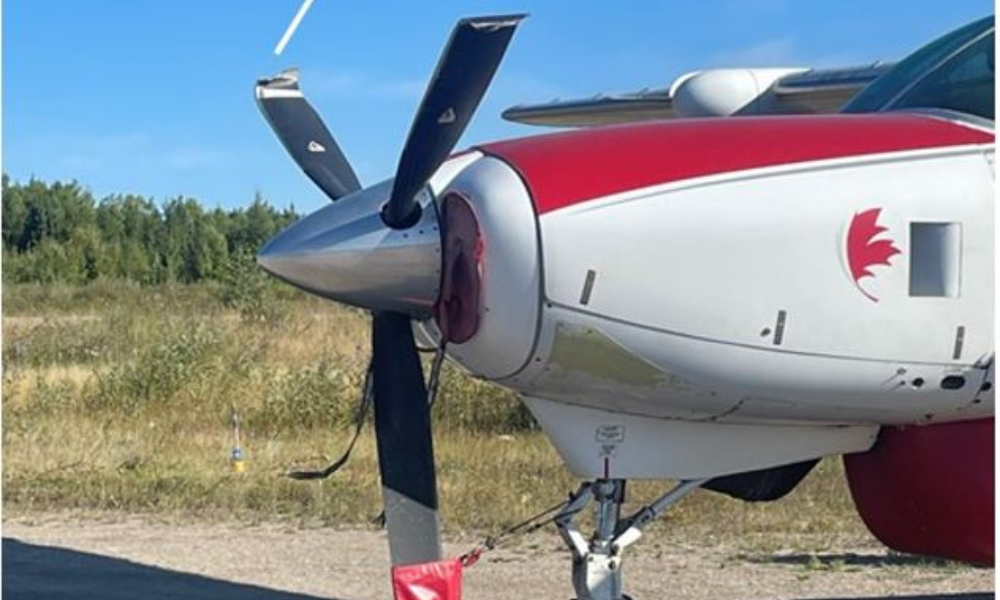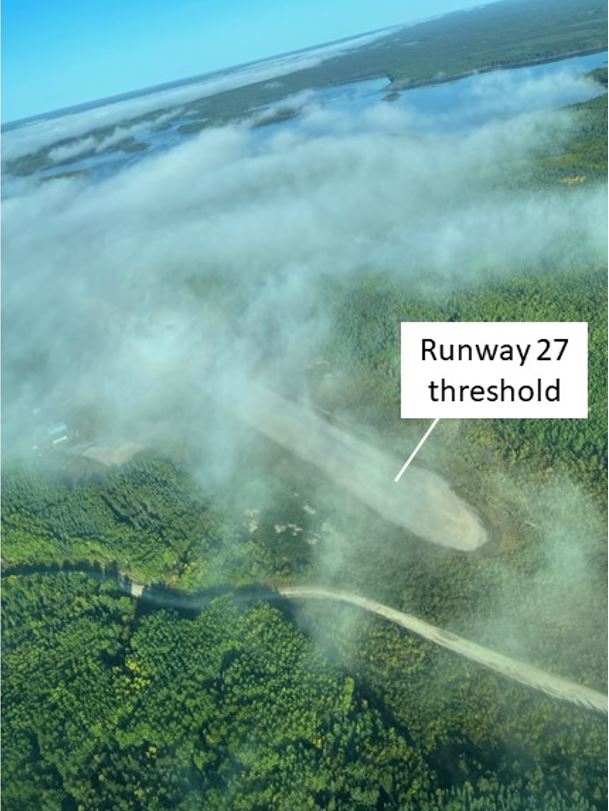Transportation Safety Board releases report into overrun

Dense fog and reduced visibility led to a runway overrun by an aircraft in Ontario in 2023, according to a report from the Transportation Safety Board of Canada (TSB).
The incident happened on Sept. 12, 2023, when the Superior Airways Limited Cessna 208B aircraft was scheduled for 2 daytime visual flight rules (VFR) return flights from Red Lake Airport (CYRL) to Pikangikum Airport (CYPM), both in Ontario.
On the second trip that day, the pilot noticed fog over CYPM and the community of Pikangikum as the aircraft approached the airport. The pilot activated the aircraft radio control of aerodrome lighting and was able to see the east end and threshold of Runway 27.
The aircraft touched down approximately 1,850 feet from the runway threshold at an approach speed of around 90 knots. With visibility limited by the fog, the pilot was unable to accurately judge the runway distance available for a safe rollout. Although braking and beta range power were applied, the aircraft overran the end of the runway at a reduced speed of about 35 knots, coming to rest 50 feet beyond the turnaround bay in grass and brush.

Source: Transportation Safety Board of Canada
The pilot – who was on his first day operating solo on the Cessna 208B – had 530 total flight hours and had no previous issues during the initial flight that morning, said the TSB.
The flight was also the pilot’s third flight after the completion of his line indoctrination training.
Also, there was no indication that the pilot’s performance was affected by medical or physiological factors, said the TSB.
“Pilots must be aware that operating in fog can lead to a loss of situational awareness during the approach and landing,” the board said.
“It is important for pilots to land in the touchdown zone, and to use all available means, including reverse thrust, if needed, to slow the aircraft.”
Airways’ response following the incident
Following this occurrence, Superior took the following safety action:
- Modified the VFR stabilized approach criteria in the Cessna 208B SOPs to include:
- The runway’s full length must be visible before landing.
- The target approach speed at 500 feet above ground level will be 100 knots and within a range between 110 knots and 95 knots.
- Flaps will be set at 30° when landing in winds less than 10 knots and at 20° when landing in winds greater than 10 knots.
- Touchdown is to be completed in the first 1000 feet of the runway.
- Requires new captains to complete a captain’s risk assessment form before every flight that includes weather minima, as well as other criteria, to be met in order for the pilot to dispatch on a flight.
- Installed GPS (global positioning system) tracking devices in all aircraft to allow monitoring of aircraft fleet.





